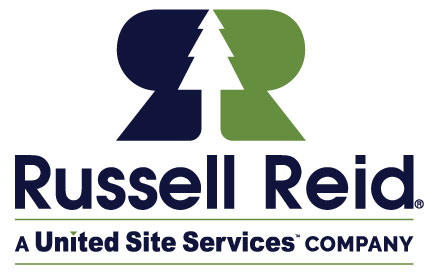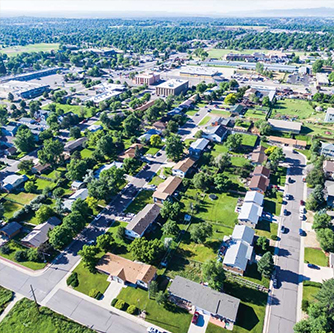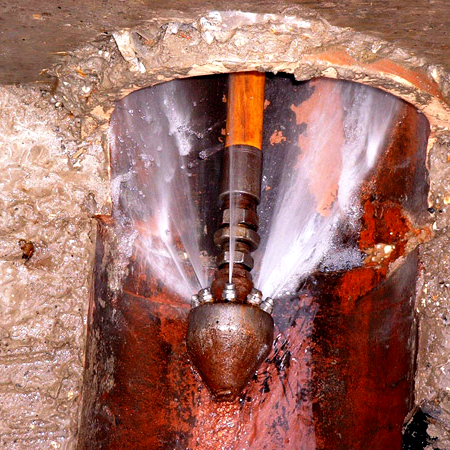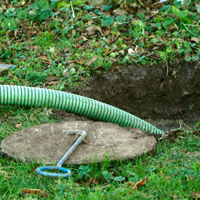SEPTIC SYSTEM 10 POINT SERVICE CHECK
Below is an explanation of each point evaluated during your Russell Reid 10 Point Service Check, performed with your regular residential pumping service and detailed on your work order document. Please contact our Customer Care Department at 800-356-4468 if you have questions or concerns regarding the results of your 10 Point Service Check.
A measurement of how deep under the ground the lid of the septic tank is. Service lids that are below grade may result in extra digging and locating charges at the time of your septic service. If the depth of your tank is 1 foot or more, you may want to consider installing a riser which brings the lid to grade.
An assessment of the physical integrity of the service lid of the septic tank. The service lid provides access to the septic tank and a secure seel when in place preventing foreign matter such as dirt, rocks, etc. from entering the tank. A lid in poor condition is a safety hazard and increase the risk of infiltration and potential collapse. It is important to replace a damaged lid as soon as possible.
A measurement of the service access point of the septic tank. Usually there are three openings on a septic tank; two small baffle inspection openings (approx. 5″) and one large main opening (approx. 30″). The service of your septic tank must be performed through the main lid to ensure adequate access. Service should only be performed through any smaller inspection port at the customer’s direction.
A measurement of the amount of floatable present at the top of the septic tank. If the scum mat on top of the tank becomes too thick this material can be carried out to the drain field which may cause irreversible damage to your system. Scum blankets exceeding 6 inches in depth indicate a need to increase pumping frequency.
A measurement of the amount of solids present at the bottom of the septic tank. Solids will also begin to enter the drain field if they become too thick, which may also cause irreversible damage to your system. Sludge levels exceeding 10 inches in depth indicate a need to increase pumping frequency.
An observation of water flowing in to the tank from the home. Your Field Service Technician will ask you to flush a toilet in your home to confirm an unimpeded flow into the septic tank. A poor flow from the home may indicate a clog and if not addressed could result in unsanitary back-up conditions. Jetting or snaking may be considered to address this problem.
An observation of water flowing back into the tank from the drain field during pumping. If this is seen, it may be an indication of a damaged drain. A more in-depth assessment of the septic system should be performed ASAP by a licensed septic inspector.
An observation of sewage on the ground over the drain field. This is usually observed in conjunction with run back from the drain field and is an indication of an over saturated drain field. A more in-depth assessment should be performed ASAP by a licensed engineer.
An observation of the condition of the inlet baffle inside of the septic tank. The inlet baffle directs incoming sewage downward below the liquid level minimizing disruption of the liquid and solid layers inside the tank. A broken and/or missing inlet baffle needs to be repaired ASAP in order for the tank to function properly.
An observation of the condition of the outlet baffle inside of the septic tank. The outlet baffle prevents the scum mat and retained solids from entering the drain field. A broken and/or missing outlet baffle needs to be repaired ASAP in order maintain the integrity of the drain field.







